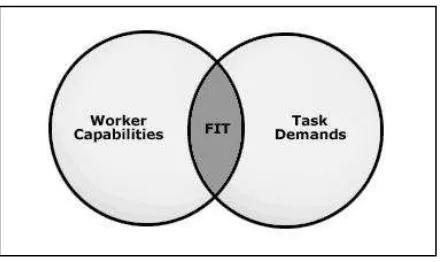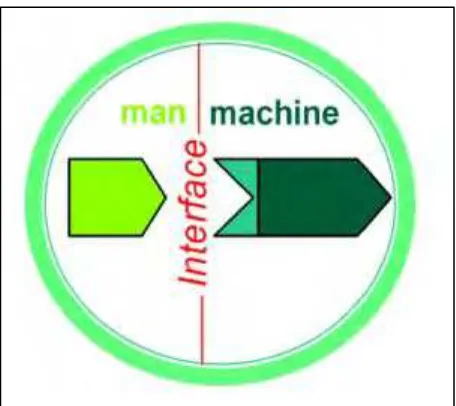UNIVERSITI TEKNIKAL MALAYSIA MELAKA
ANTHROPOMETRIC DIMENSIONS AND PREFERRED
WORKING SURFACE FOR THE LECTURER OFFICE
This report is submitted in accordance with the requirement of Universiti Teknikal Malaysia Melaka (UTeM) for the Bachelor of Manufacturing Engineering Technology
(Product Design) with Honours
by
MOHAMMAD SYAFIEQ BIN SAZALI B071210334
900928-02-5373
DECLARATION
I hereby, declared this report entitled ―Anthropometric Dimensions and Preferred Working Surface for the Lecturer Office‖ is the results of my own research except as
cited in references.
Signature : ……….
Author‘s Name : ……….
APPROVAL
This report is submitted to the Faculty of Engineering Technology of UTeM as a partial fulfillment of the requirements for the degree of Bachelor of Manufacturing Engineering Technology (Product Design) with Honours. The member of the supervisory is as follow:
i
ABSTRACT
ii
ABSTRAK
iii
ACKNOWLEDGEMENT
iv
DEDICATION
Especially for beloved father and mother: Sazali Bin Yusof
Salmah Binti Mat Zain
To all my siblings: Nurul Syuhada Binti Sazali
Nurul Syaqila Binti Sazali
v
List of Abbreviations, Symbols and Nomenclature xi
CHAPTER 1: INTRODUCTION 1
2.2.1 Ergonomics Definition 6
2.2.2 History of Ergonomics 7
2.2.3 Objective of Ergonomics 8
2.2.4 Important of Ergonomics 9
2.2.5 Physical Ergonomic Considerations in Product Design 9
2.2.6 Ergonomics Work Surface (Office) 10
2.3 Anthropometric 11
2.4 Posture 14
vi
2.6 Risk Factors 15
2.7 Lower Back Pain (LBP) 15
2.8 Video Display Terminal (VDT) 16
2.9 Simulation Analysis (CATIA) 17
2.9.1 Manikin 17
2.9.2 RULA Analysis 18
CHAPTER 3: METHODOLOGY 19
3.1 Introduction 19
3.2 Research Methodology 19
3.2.1 Flow Chart Description 21
3.3 Subject and Equipment 22
3.4 Procedures 25
CHAPTER 4: RESULT AND DISCUSSION 27
4.1 Introduction 27
4.2 Anthropometric Dimensions 27
vii
CHAPTER 5: CONCLUSION AND RECOMMENDATION 49
5.1 Conclusion 49
5.2 Recommendation 50
REFERENCES 51
APPENDICES
A Type Of Anthropometrics Measurment B Anthropometric Measurement List C Survey Question
viii
LIST OF TABLES
Table 2.1: Example of anthropometric data measurements with the method 13
Table 3.1: Description each part of flow chart 21
Table 3.2: Details of work station dimension 23
Table 3.3: Anthropometric measurement tool 24
ix
LIST OF FIGURES
Figure 1.1: Basics of ergonomics 1
Figure 2.1 : Basics of ergonomics according to Chakrabarti (2005). 7
Figure 2.2: Ergonomics work surface 11
Figure 2.3: Anthropometric measurements for sitting person 12
Figure 2.4: Manikin model in stand condition. 18
Figure 3.1:Flow chart of methodology 20
Figure 3.2: Illustration of work station dimension 23
Figure 4.1a:Forearm breadth measurement of male respondent 28 Figure 4.1b:Forearm breadth measurement of female respondent 28 Figure 4.2: Bell curve graph represent normal distribution 31 Figure 4.3:Percentage of ergonomics awareness among FTK lecturers 34 Figure 4.4:Percentage of current monitor position at the lecturer office 35 Figure 4.5:Percentage of frequently used object position 36 Figure 4.6:Percentage of work surface at elbow height 36 Figure 4.7:Statistic of discomfort while using the current work surface 37 Figure 4.8:Graph of improvement area suggested by respondent 38
Figure 4.9:Colour indicator with RULA score 39
Figure 4.10a:L-Shape work station 40
x Figure 4.11: Anthropometric measurement for manikin in RULA analysis 41 Figure 4.12a: RULA analysis result for L-Shape work station (Male lecturer) 42 Figure 4.12b:RULA analysis result for rectangular shape work station (Male lecturer)43 Figure 4.13a:RULA analysis result for L-Shape work station (Female lecturer) 44 Figure 4.13b:RULA analysis result for rectangular shape work station (Female lecturer)
xi
LIST OF ABBREVIATIONS, SYMBOLS AND
NOMENCLATURE
2D - Two-dimension
3D - Three-dimension
CAD - Computer Aided Design
CAM - Computer Aided Manufacturing
CATIA - Computer Aided Three-dimensional Interactive Application
DHM - Digital Human Models
LBP - Low Back Pain
MSD - Musculoskeletal Disorder VDT - Video Display Terminal RULA - Rapid Upper Limb Analysis
- Standard Deviation
N - No. of sample
X - Sample
- Mean
Ανθρωπος - Man
1
CHAPTER 1
INTRODUCTION
1.1 Introduction
Nowadays, technology is booming in all kinds of fields such as automotive, furniture, clothing, and more. This is because technology is intended to solve the problems in our daily lives. Every day, there is at least one product produced by any company. To produce a new product, several factors should be considered such as customer preference and comfortable usage. The presence of ergonomics sciences will ensure that each product is produced in accordance with the provisions of ergonomics. In other words, ergonomics is the study of the interaction between humans and machines and the factors that affect the interaction. In ergonomics, the correct way of working with any tools in the workplace must fit the human‘s capability to accomplish the task demands as in Figure 1.1.
2 This is important because, according to Orosha (2013), our musculoskeletal system is affected when we are performing a task while our body is stressed by awkward posture, high temperature, or repeated motion. Due to this, our body may begin to feel symptoms such as discomfort, fatigue, and pain. All of which can be the first signs of musculoskeletal disorder (MSD). This can all be prevented with the help of ergonomics. But in Malaysia, ergonomics issues among workers are not widely recorded and documented compared to other issues such as air pollution, natural disasters, and other hazards. We have limited anthropometric data compared to other countries. According to Al-Atabi and Namasivayam (2013), anthropometry is an important part of the study of ergonomics as it deals with statistical data about the human body which can help design comfortable and optimized products and processes. Therefore, a product that is invented in this country cannot be said to follow true anthropometric data for this country‘s population.
3
1.2 Objective
Based on this study, there are several objectives that have been highlighted. These objectives will be represented as the guide to achieve the aim of this study. The objectives are listed below:
(a) To collect all the anthropometric data appropriate with ergonomics study among FTK lecturers.
(b) To study whether the current workstation in lecturer offices follow the ergonomics rules and anthropometric data.
(c) To make improvements to the design of work surface at lecturer offices based on this study.
1.3 Problem Statement
4
1.4 Scope
5
CHAPTER 2
LITERATURE REVIEW
2.1 Introduction
Literature review is an evaluative report of information found in the literature related to the field. This is the phase where all the processes, such as searching, analysing, and collecting information that have been published by researchers, happen. All the information, including theoretical and methodological data, will be listed as references and evidence for this project. The information sources are extracted from books, journals, paper journals, etc. This literature review also references past studies in this project field.
6
2.2 Introduction of Ergonomics
2.2.1 Ergonomics Definition
According to Bridger (2003), the term ‗ergonomics‘ originated from the Greek term ‗ergon‘ which means work and ‗nomos‘ which means law. In other words, ergonomics is the study of the interaction between people and machines and the factors that affect the interaction. Ghosh et al. (2011), explains that Ergonomics or human factors is the scientific discipline concerned with knowing how interactions between humans and other elements of a system happen. It is also the profession that applies principle, theory, data, and methods to design to optimize human well-being and overall system performance. Ergonomics encompasses the relationship between humans, machine systems, job design, and the work environment (Zafir Mohamed Makhbul et al. 2007).
7 Figure 2.1 : Basics of ergonomics according to Chakrabarti (2005).
2.2.2 History of Ergonomics
Based on Bridger (2003), ergonomics science came about as a result of the design and operational problems presented by technological advances in the last century. It also owes its development to the same historical processes that gave rise to other disciplines such as industrial engineering and occupational medicine. Scientific management developed by F. W. Taylor and work study developed by the Gilbreths is precursors to ergonomics. Both were developed at the beginning of the twentieth century and were based on the realization that productivity could be improved by redesigning the way work was done and not just by using better machines.
8 (a) 1950s: Military ergonomics
(b) 1960s: Industrial ergonomics
(c) 1970s: Consumer products ergonomics
(d) 1980s: Human-computer interaction and software ergonomics (e) 1990s: Cognitive ergonomics and organization ergonomics (f) 2000s: Global communication, internet, and virtual collaboration
2.2.3 Objective of Ergonomics
According to Lenkeit (2013), the purpose of ergonomics is to fit the task demand to the individual and not the individual to the task. An ergonomist appraises the demands of a specific task with reference to the capability of the worker to perform the task over a certain time period. Each study commonly has its own proposed objective to achieve. In the ergonomics field, the main objectives can be separated into four main categories. First, the objective is to enhance in a human way, meaning ergonomics study will improve on human life especially when the work deals with machines or capable commodities. The second objective is to improve productivity of work. With ergonomics rule, it will ensure increased productivity by applying the correct way to work. It will also ensure human safety while working with machines. Ergonomics will prevent humans from getting injured easily while working. Lastly, the objective is to make the product comfortable and effective to use (Chakrabarti, 2005).
9 landscaping, and personal space. Therefore, this project study will focus on the furniture and equipment as they both have a strong influence on posture.
2.2.4 Important of Ergonomics
Orosha (2013), states that ergonomics science is important because our musculoskeletal system is affected when we are performing a job while our body is stressed by awkward posture, high environment temperature, or repeated motion. Our body may start to feel symptoms, such as discomfort, fatigue, and pain, which can be the first signs of MSD.
According to US Department of Labor (2000), if task demand and equipment do not embody ergonomics principles in any kind of design, workers may have exposure to improper physical strain, stress, and overexertion, including awkward posture, awkward vibrations, forceful exertions, repetitive movement, and heavy lifting or loading. Appreciating ergonomics risk factors in the workplace is an extremely important first step in rectifying hazards and improving laborer protection. Health professionals, occupational safety personnel, ergonomists, and other trained individuals believe that by reducing physical stress in the workplace, it could eliminate up to half of the serious injuries that occur every year. Workers can learn to anticipate what might go wrong and alter their equipment and the work environment to ensure the task is safely performed.
2.2.5 Physical Ergonomic Considerations in Product Design
10 to consider in the design of products and help find ways to increase safety and comfort during user-product interaction. The principles of physical ergonomics are:
(a) Moderate body motions
(b) Promote postures of least stress (c) Minimize static load
(d) Provide clearance
(e) Reduce exposure to vibration and impact forces (f) Moderate heat build-up in person-product interface (g) Limit exposure to shear forces
(h) Reduce application of excessive force (i) Reduce exposure to contact pressure (j) Reduce tissue distortion
2.2.6 Ergonomics Work Surface (Office)

